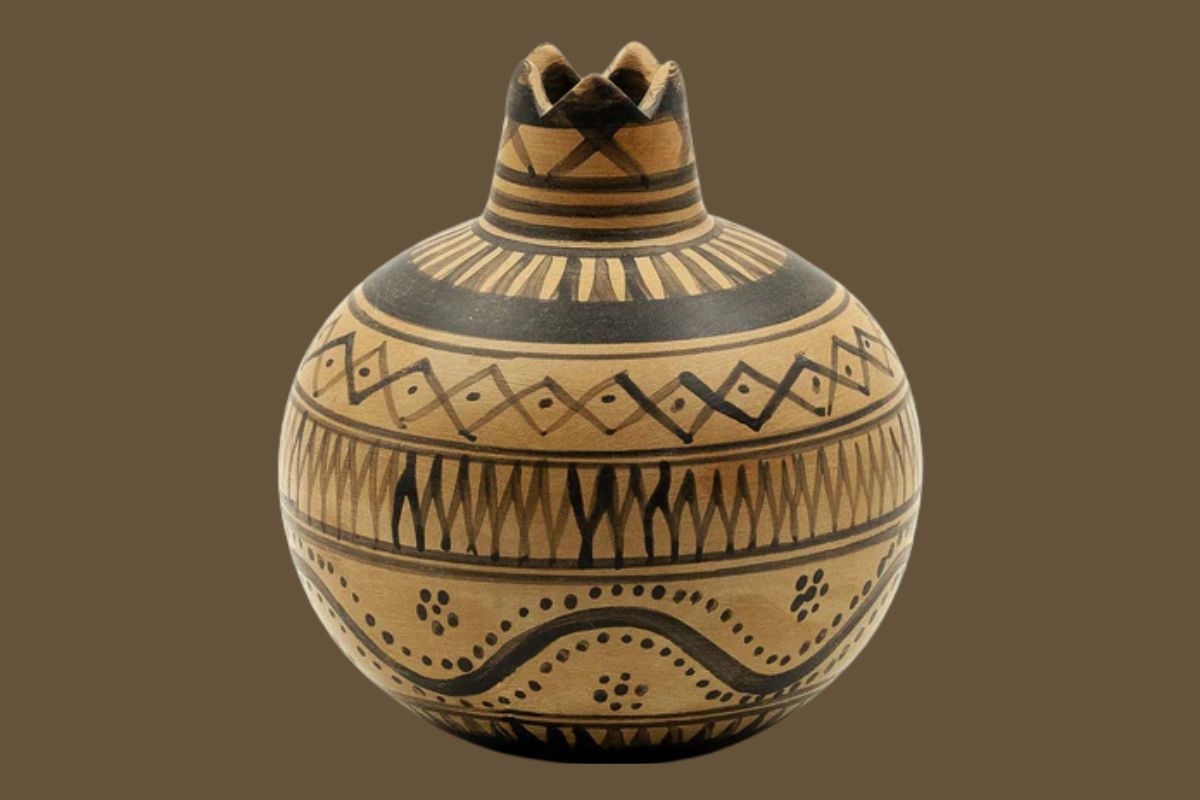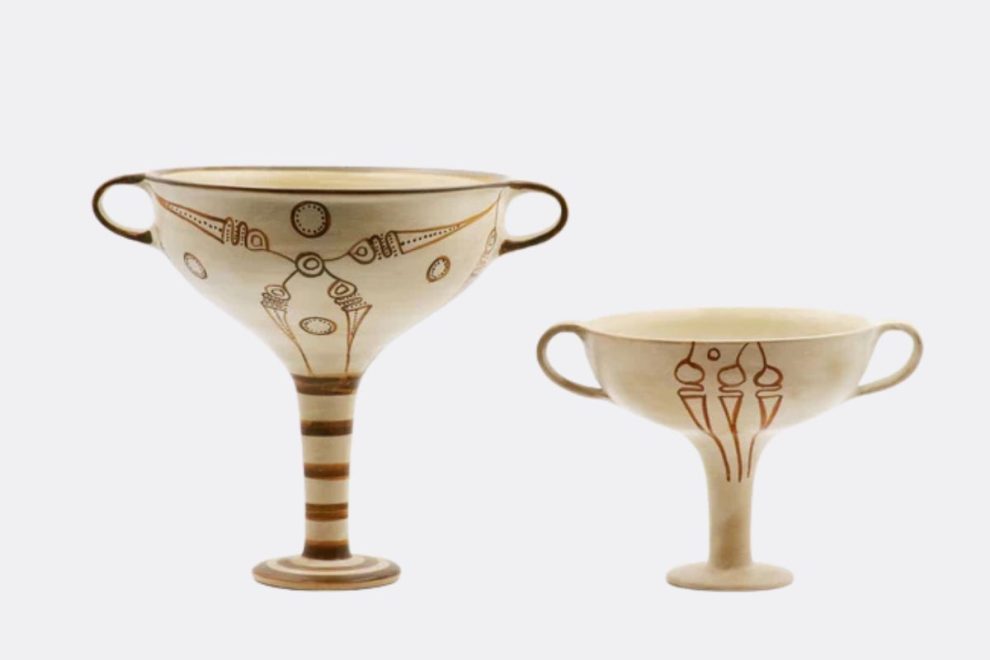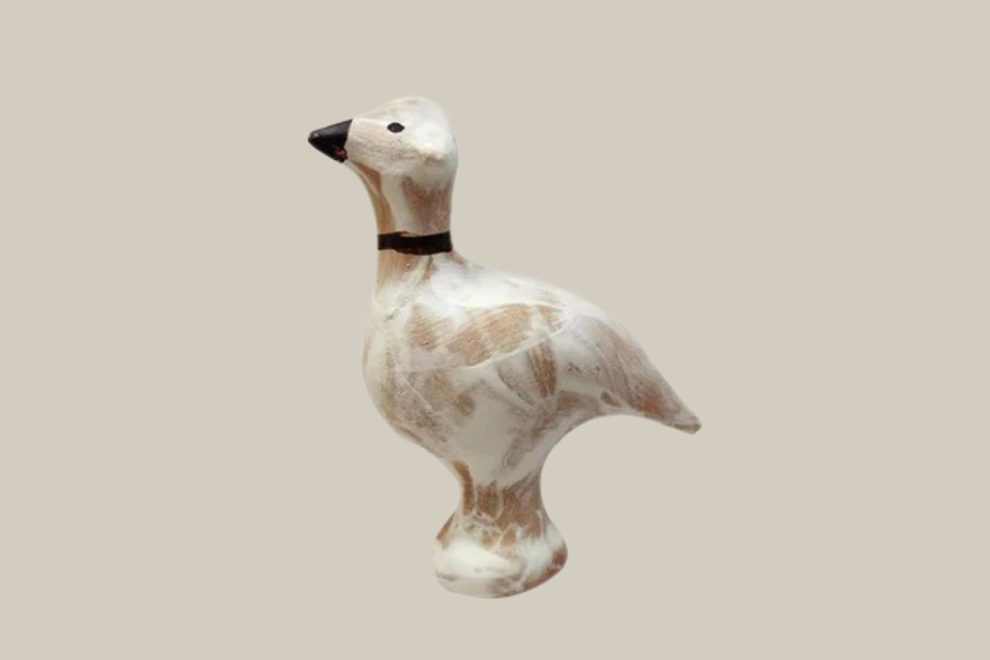
The Geometric period was a key time in ancient Greece from 900 to 700 BCE.
Key Highlights
- Geometric Greek pottery grew popular from 900 to 700 BCE. This was a changing time in ancient Greece.
- It showed bold geometric designs like meanders, circles, and triangles.
- Artists commonly used terra cotta, showing new ideas in making pots.
- The decorations often included people and animal figures with special meanings and myths.
- Geometric pottery was often used as grave markers. This showed the burial customs of that time.
- The art style called horror vacui filled every part of the pots with designs.
During this era, Greek art began to grow. Geometric art is known for its simple shapes and symbols. Geometric Greek pottery is a prime example of how this style made pottery a way to show culture. Ancient Greek potters used strong designs and new methods to create famous artworks. This time marked a return after the Dark Age. City-states became more important, and Greek civilization started to build its cultural and artistic strength again.

Evolution of Geometric Greek Pottery
The development of geometric Greek pottery began after the Dark Age in ancient Greece. Artist families shifted from plain Proto-Geometric styles to more detailed designs that decorated entire pots. This style reflected the cultural comeback during the geometric period. It combined practicality and creativity. Athens grew into an important place for making pottery. Big kraters and amphorae served as grave markers. These items showed more use of geometric designs along with images of people and animals. This influenced the development of Greek art in the future.
Origins and Influences
The story of geometric pottery begins in the Greek Dark Age. This time came after the Mycenaean castles fell in the eleventh century BCE. During this hard time, signs of civilization, like reading and trade, became weaker. However, pottery started to grow again in the Proto-Geometric period. Artisans used simple shapes inspired by Mycenaean designs. This period also saw the first use of fast wheels, which made it possible to create taller pots. During the geometric period (900–700 BCE), pottery saw significant changes. Athens became a hub for this art form. Trade and the arrival of the Phoenician alphabet sparked new cultural interest in pottery designs. Some pots were large and linked to funerals. They symbolized the rebirth of Greek civilization. This cultural growth also showed how important cities are. Geometric art celebrated both individual identity and common traditions. This created the city-centered thinking of classical Greece.
Key Characteristics and Styles
Geometric art was an important part of ancient Greek pottery. Patterns like meanders, circles, and triangles were common on pots and vases. These designs often appeared in lines. This way, they showed the balance and harmony found in geometric art. Artists used simple shapes, like triangles, to show human and animal forms. This style mixed real life with creative design. Curvy lines, which are decorative and smooth, became very popular. They showed ideas of movement and connection. Geometric pottery paid a lot of attention to horror vacui. This meant that every part of the pot was filled with detailed designs. Every space had rosettes, starbursts, or crisscross patterns. No area was left empty. These details showed the skill and art of ancient Greek potters.
Materials Used in Geometric Greek Pottery
Terra cotta is a brownish-red clay. It was very important in ancient Greek art during the geometric period. This kind of clay allowed potters to create different shapes while being strong and easy to work with. Artists used new tools like the fast wheel to make detailed vases in many sizes. These tools helped them create large kraters and amphorae, some as tall as six feet. People often used these items in ceremonies or as grave markers. Terra cotta was not only useful, but it could be shaped and fired in several ways. This skill helped make beautiful designs in geometric pottery. From basic patterns to detailed pictures of people, terra cotta played a key role in blending form and meaning in ancient Greek art. It showed the creativity of that era.
Artistic Techniques in Geometric Pottery
Geometric pottery was unique because it mixed skill with art. Potters took great care to decorate every part of their vessels. They used a style called horror vacui, which aims to fill every space. They often painted pictures of funerals, chariots, or processions on the biggest part of the pot. Artists used clever ways to create detailed designs, like meanders, with smooth lines. The natural colors of terra cotta and the geometric shapes made the pottery lovely and important.
Pottery Construction Methods
Greek potters used careful methods during the geometric time. They decorated every part of their pots to show their skills. The fast wheel was important. It helped them make different pots like kraters, amphorae, and oinochoe that looked alike in shape and size. The Dipylon Master used many patterns and filled each vase with images. This style is called horror vacui. The scenes were arranged carefully, often on different levels. The main stories appeared on the widest part of the pot. These designs showed funeral processions or myths. They had important cultural meaning. Geometric vase painting focused on balance. This helped make the designs look nice. Even detailed decorations, like lines creating pretty patterns, flowed easily on both big and small vases.
Decorative Techniques and Colors
Decorative styles in geometric pottery used lines that keep going to make repeating patterns. Common designs were meanders, spirals, and circles within circles. These patterns showed how everything is linked and fits with nature. Colors played a big role in geometric art. They showed off the differences in designs. The orange color of terra cotta looked great with shiny glazes. Black bands usually cut across the vase, separating its parts. This blend of colors made the whole piece look nicer. Main scenes were put on the largest part of the pot. This choice made the story stand out and often showed parades or ceremonies. Smaller shapes filled the surrounding areas. This way showed the artist’s goal to use all the space and highlighted the beauty of geometric pottery.

Symbolism in Geometric Greek Pottery
Geometric Greek pottery was rich in meaning because of its intricate designs. The patterns, figures, and symbols shared stories about religion, myths, and social life. These pots told stories through their shapes and designs. They focused on funerals, heroes, and the gods. The combination of human and animal images with geometric patterns helped artists express values like wealth and safety. This link between appearance and meaning showed how the ancient Greeks viewed their spiritual and cultural history.
Religious and Mythological Motifs
Religious symbols played a big role in the designs of geometric pottery. People often used these vessels as gifts to gods. Ancient Greek sculptures and paintings often showed stories about heroes and gods from myths. Funeral ceremonies, like prothesis and ekphora, were often shown. They depicted mourners near the dead or chariots in a parade. Mythical stories, even when unclear, added to the art’s story. By linking designs to legends, potters made these vessels sacred items that had cultural meaning. These pieces of pottery helped the Greeks show their faith in help from the gods and ask for good things. The shapes and designs showed a spiritual part of ancient Greek life. Each pot had detailed images related to their stories and ceremonies.
Social and Cultural Representations
Geometric pottery showed that civilization started to return after the Greek Dark Ages. As society got better and new Greek culture developed, these beautiful pieces reflected community ties and individual hopes. Images from daily life, together with fancy patterns, showed the values related to the city, revealing a new social order. Funeral art displayed brave soldiers in armor. This showed how noble families cared about their heritage and rank through the design of their tombstones. The art from the geometric period connected cultural renewal to creative expression. It showed both important meanings in ceremonies and changing social values. Pottery became a way to mark history and identity.
The Meaning of Animal Figures in Geometric Greek Pottery
Animal figures in Greek pottery had important meanings. They represented wealth, status, and approval from the gods. Horses stood for prosperity since they were costly to care for. This showed how important rich families were. The shapes of the figures were simple and easy to see. Horse bodies were square with curved necks. Other animals like bulls, deer, and birds were shown using basic forms to display their unique traits. The animal images were not just nice designs. They had important roles in rituals and gifts to the gods. Artists combined what they saw in real life with creative designs. They honored the beauty of nature and linked animals to human stories. These designs made Greek pottery a way to tell cultural stories.
The Importance of Human Figures in Geometric Greek Pottery
Humans on geometric pottery showed fresh artistic ideas about the human body. Artists used triangles for the bodies and cylindrical shapes for the arms. This made their work stand out while still showing lifelike legs. The scenes often showed parades, games, or multiple funeral images. Artists used features, like triangles for women’s breasts or long beards to show men as mature. These details linked real and abstract forms. Geometric pottery showed the society’s focus on family, heroes, and lasting memory. By displaying human figures in rituals or group activities, potters pointed out important cultural values and the strong impact that the city had.
In conclusion, studying Geometric Greek pottery shows us how talented ancient artists were. It also shows key cultural values and beliefs that shaped their society. The changes in styles, methods, and symbols in this art highlight pottery’s role in storytelling and expression. By learning about where it came from, the materials used, and the common designs, we can see the social order, religious views, and daily life of the ancient Greeks. This lasting impact inspires both artists and historians today. Geometric Greek pottery is an important topic for those who care about pottery history and culture. Enjoy the beauty and details of this ancient craft, and let it increase your understanding of how art and society connect over time.
